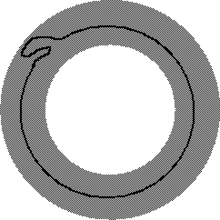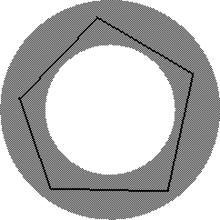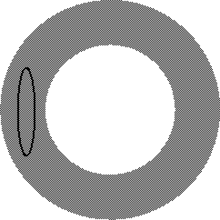Boundary parallel
In mathematics, a closed n-manifold N embedded in an (n + 1)-manifold M is boundary parallel (or ∂-parallel, or peripheral) if there is an isotopy of N onto a boundary component of M.
An example
Consider the annulus . Let π denote the projection map
If a circle S is embedded into the annulus so that π restricted to S is a bijection, then S is boundary parallel. (The converse is not true.)
If, on the other hand, a circle S is embedded into the annulus so that π restricted to S is not surjective, then S is not boundary parallel. (Again, the converse is not true.)

An example wherein π is not bijective on S, but S is ∂-parallel anyway.

An example wherein π is bijective on S.

An example wherein π is not surjective on S.
gollark: Fun Opus fact: PotatOS Potatonetworking can trilaterate any Opus device's location because they constantly send SNMP pings.
gollark: Happy chicken, everyone!
gollark: Hke goes the university?
gollark: If you plan to do lawnmowing then I'd recommend either making it use a block scanner to detect grass, *or* just have it fire in each direction slowly.
gollark: At least not without making it move around or sense its rotation using haxxx.
This article is issued from Wikipedia. The text is licensed under Creative Commons - Attribution - Sharealike. Additional terms may apply for the media files.